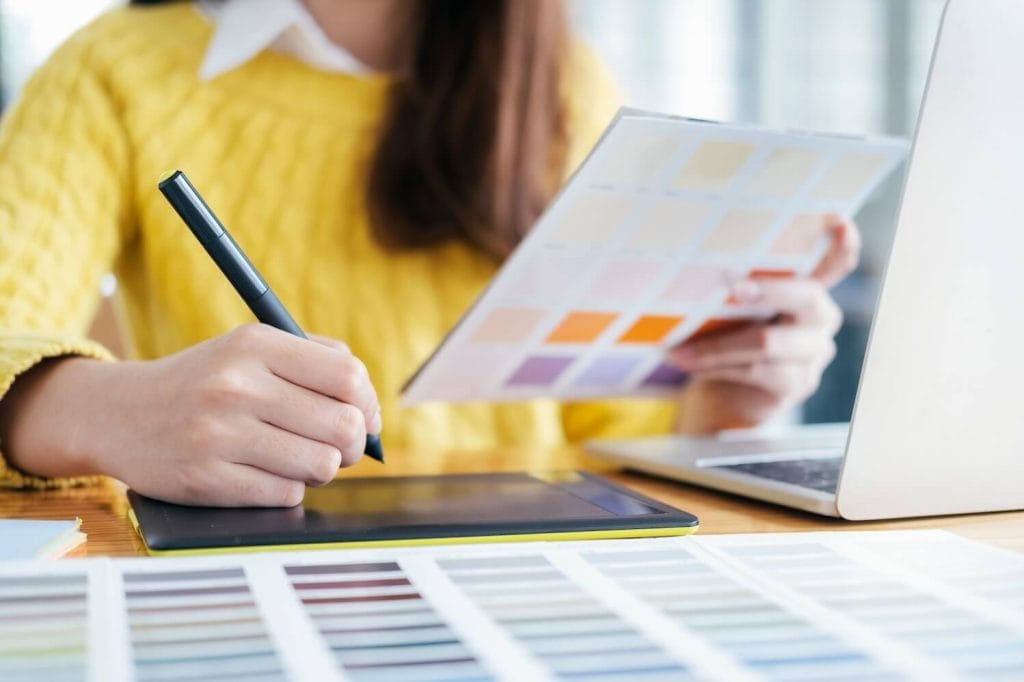A web design project requires careful direction and patience when working with an agency or design team. Sometimes, it feels like they should just be ready to go and get what you need after you talk to the sales rep, but that’s rarely the case. Web designers are not mind readers, so making positive collaborations at the early stage of a project is vital for success.
It’s important to keep an open mind. Of course, creativity flourishes within guidelines. However, that phenomenon starts to break down when the client sets such strict guidelines that they try to do the design themselves.
Before starting your web project with a dedicated design team, here’s everything you need.
Web Design Goals: Identify the core problem & solve it with the final product
With any good design, the end goal is to solve a problem and look good while you do it. So, while this sounds maybe a little negative, it roughly can translate into:
- Problem: I need customers to be able to find my Request a Quote page on my website
- Design Solution: Create multiple, clear Calls To Action to push users into that page
Ultimately, the goal of any design is to get the user where they need to go or to understand the desired information you want to convey. You should clearly know what the website should do for your business.
There are a few roles that a website can play for a brand:
- Generate leads
- Raise brand awareness
- Sell products
- Promote service
- Provide quotes
Of course, there are other cases of need besides the above, but this gives you a good idea of where to start identifying the purpose of your website. Some sites can also be multi-functional; think of sites that sell individual products but offer quotes. However, generally, one route is the primary goal, and there are secondary and tertiary purposes that support it.
These types of problems and solutions end up being the core features of the site that should be considered beforehand. It is far easier to talk about eCommerce at the beginning of the project rather than getting halfway through and realizing that it should be a core part of how you do business.

A clear idea of your look & feel
While this may sound a bit abstract, it’s straightforward. Your look and feel are essentially the mood or vibe that your brand evokes. Words like clean, professional, fun, quirky, dark, sleek, and spacious are all great examples of look and feel descriptors.
Some people may know right away what the right look and feel for their site is, whether it’s a continuation of their current one or a desired new path they have been waiting to explore. That’s not always the case, though. We recommend seeking out other sites to find a look and feel you want to emulate since sometimes it can be difficult to put into words. It’s a good idea to look at your competitors and other companies in the same industry to get a feel for the standard since you don’t want to be too out there and possibly alienate your audience.
Feel free to explore sites outside of your industry as well. There are many great places to find inspiration on the web, too. Be wary, though, and remember that some sites that showcase the best websites on the internet usually have a price tag to match. Keep your expectations realistic if you venture into those spaces.
Stylistic updates for your brand
When you’re doing a rebuild or getting a new site altogether, it is one of the best times to make big brand updates. Take the time to check in with your brand and make sure that it’s still serving you. Again, this might sound abstract, but it hinges on your look and feel.
Ask yourself these questions before giving design direction on the treatment of your brand:
- Does your current brand presence still serve you as well as it did?
- Is it still relevant to any updates in styles or industry over the years?
- Do you still like it?
- Are you open to any new color or font suggestions?
Going through this will help you feel more comfortable and confident in giving direction, ultimately making you happier with the end product.
Logos, images, & brand assets
Your brand assets are all the core elements that comprise your brand, so the most important elements are your logo, fonts, and color palette. These are the foundation for your brand and are vital in making any design. A document that notates this information, such as a brand book or style guide, is greatly helpful but unnecessary.
The logo is a site’s cornerstone and absolutely essential to the design. To maximize your designer’s ability to work with it, we recommend sending various file types and color variations (if available). A vector logo is preferable so it can be sized and possibly recolored if you don’t have a light or dark variant.
Image assets are important to make your design feel like your brand, especially when working with a web designer. While we can gain great insight from your desired look and feel, it can throw people off if no images are yours. Stock can work great for getting an idea across, but for many, it’s hard to envision themselves and their brand in this stock, so it ultimately feels like someone else’s company.
A good attitude & excitement
We’re giddy about starting our new projects and working with partners who match that excitement. We will embark on this exciting project together, so coming in with a balance of clear goals and an open mind can do wonders. Let us know if you need a new website design!
Photo Credit: Envato Elements
